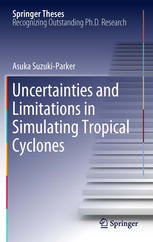

Most ebook files are in PDF format, so you can easily read them using various software such as Foxit Reader or directly on the Google Chrome browser.
Some ebook files are released by publishers in other formats such as .awz, .mobi, .epub, .fb2, etc. You may need to install specific software to read these formats on mobile/PC, such as Calibre.
Please read the tutorial at this link: https://ebookbell.com/faq
We offer FREE conversion to the popular formats you request; however, this may take some time. Therefore, right after payment, please email us, and we will try to provide the service as quickly as possible.
For some exceptional file formats or broken links (if any), please refrain from opening any disputes. Instead, email us first, and we will try to assist within a maximum of 6 hours.
EbookBell Team

0.0
0 reviewsThe thesis work was in two major parts: development and testing of a new approach to detecting and
tracking tropical cyclones in climate models; and application of an extreme value statistical approach to
enable assessment of changes in weather extremes from climate models.
The tracking algorithm applied a creative phase-space approach to differentiate between modeled tropical
cyclones and their mid-latitude cousins. A feature here was the careful attention to sensitivity to choice of
selection parameters, which is considerable. The major finding was that the changes over time were
relatively insensitive to these details. This new approach will improve and add confidence to future
assessments of climate impacts on hurricanes.
The extremes approach utilized the Generalized Pareto Distribution (one of the standard approaches to
statistics of extremes) applied to present and future hurricane distributions as modeled by a regional
climate model, then applied the changes to current observations to extract the changes in the extremes.
Since climate models cannot resolve these extremes directly, this provides an excellent method of
determining weather extremes in general. This is of considerable societal importance as we are most
vulnerable to such extremes and knowledge of their changes enables improved planning and adaptation
strategies.